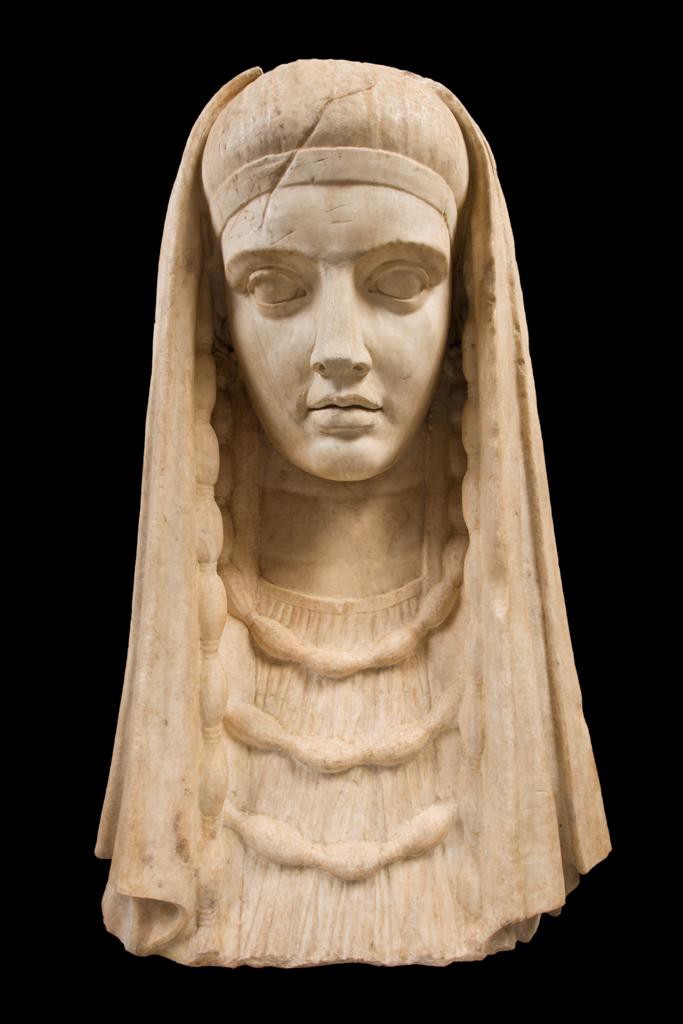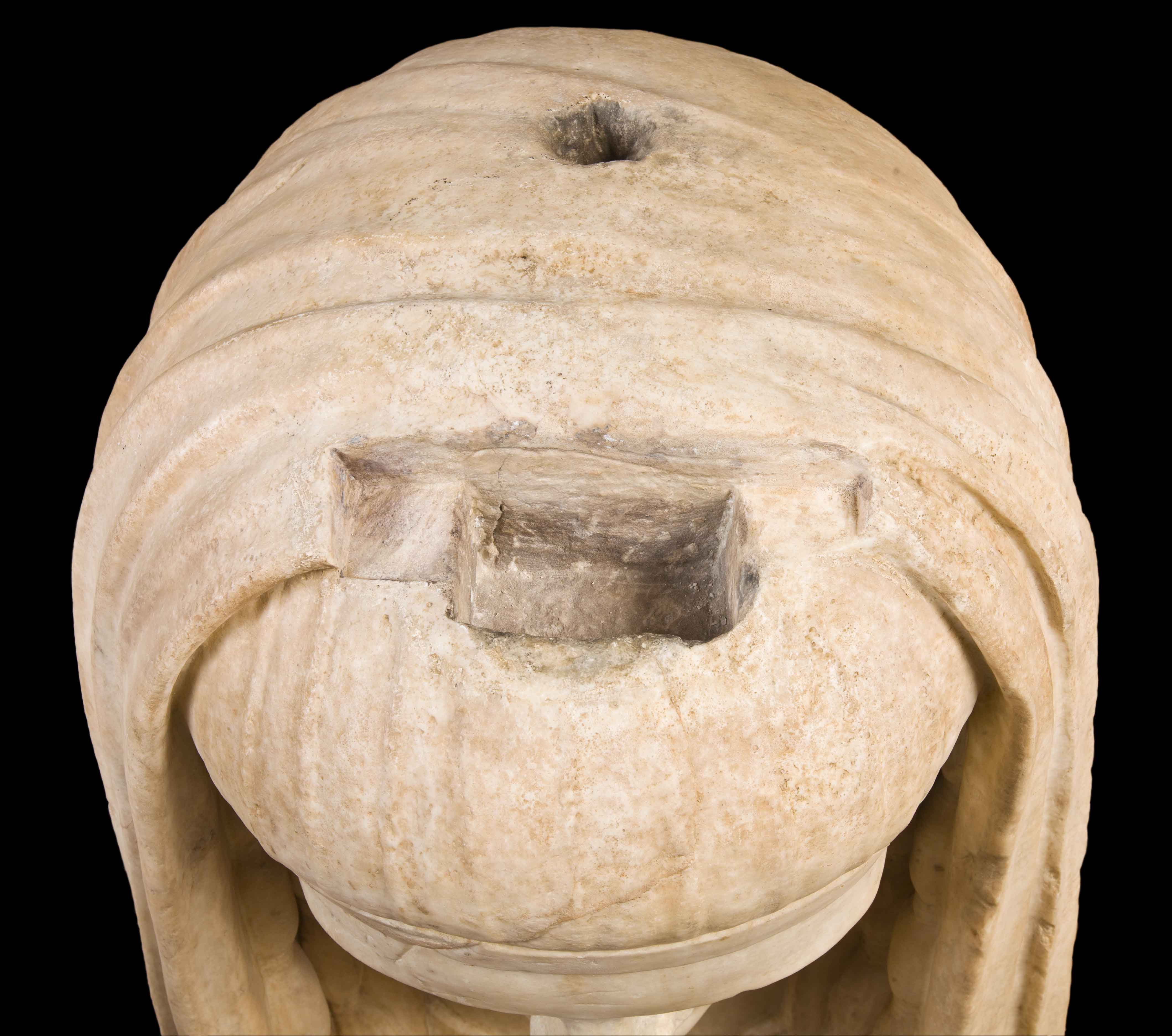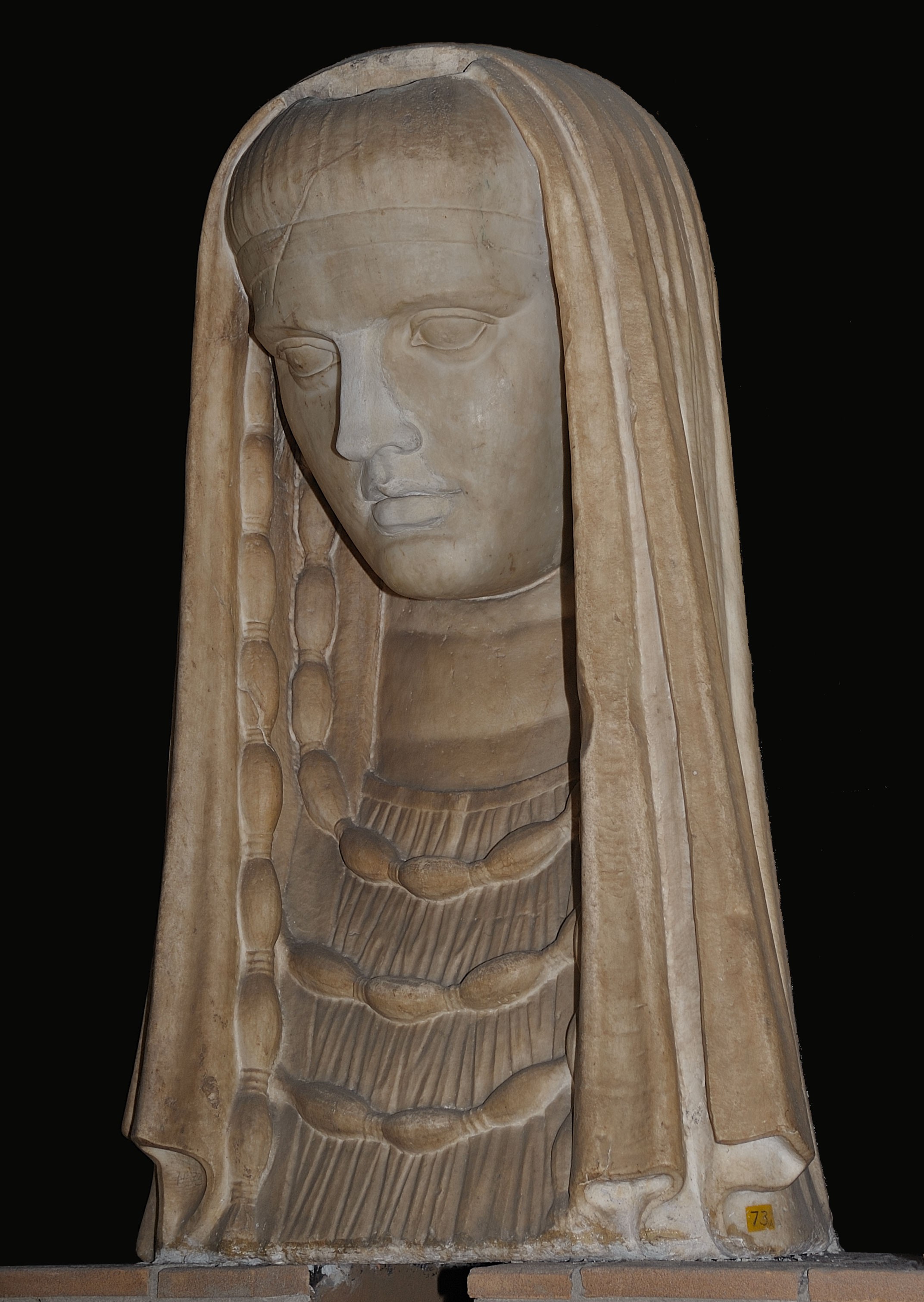Head of Isis
Artist: Unknown
Date: Age of Hadrian (117 - 138 AD)
Classification: Statue
Dimensions: 156 cm
Materials: Marble
Adopted By: The Canada Chapter
Total Cost: € 5,470
Description
This bust depicts a female deity, draped in a delicate veil, covering her head and shoulders. Scholars agree this is a depiction of the goddess Isis. The Romans often compared Isis to their goddess Demeter who is also generally represented with a veil.
Due to many common features shared by the two goddesses as well as a strong trading relationship between the Greek and Egyptian cultures, some religious confusion related to the goddesses developed. Both Isis and Demeter supervised and protected the fertility of the land and the harvest. Most importantly, particularly in Egyptian culture, the goddesses controlled the Nile floods, the phenomenon which guaranteed life itself to the Egyptian civilization.
The bust, formerly part of Collection d'Este, was found in the middle of the sixteenth century in Villa Adriana, the residence built by Emperor Hadrian in Tivoli. This bust was found in the so-called "Gymnasium", where the iliac cult was practiced.
Transported to Rome towards the end of the sixteenth century, Pope Gregory XVI acquired it for the Gregorian Egyptian Museum in 1839, the year of its founding. Today it is placed in Room III of the Egyptian Museum among other major works from Villa Adriana, displayed in accordance to their original position there as documented by Egyptologist Jean-Claude Grenier.
State of Preservation
The condition of this statue was generally good. Its surface was covered with a layer of dust and debris along with light varnish which was spread over the body in order to soften the visual difference between the various marbles used in previous restorations. Cleaning this piece preserved it for the future and enhance public viewing. Studies and investigations allowed a better understanding of the piece. A large part of the conservation process focused on the scientific analysis of the statue's surface and base using a high resolution tri-dimensional survey.
Restoration Procedures
- Documentation with 3D laser scanner
- Analytic and stratigraphic analysis
- Cleaning and consolidation of the surface
- Diagnosis of state and condition of the statue
- Recreation of a chromatic balance across the surface
- Study of the base of the statue
- Photographic documentation
Detail
Adopted By:
The Canada ChapterInventory N°: 22804
Artist: Unknown
Date: Age of Hadrian (117 - 138 AD)
Dimensions: 156 cm
Materials: Marble
Department:
Egyptian and Near Eastern AntiquitiesCurators:
Dr. Alessia Amentamuseum:
Gregorian Egyptian MuseumLaboratories:
Stone MaterialsWishbook year: 2012
Total Cost
€ 5,470

Head of Isis

Details
Adopted by: The Canada Chapter
Inventory: 22804
Artist: Unknown
Date: Age of Hadrian (117 - 138 AD)
Classification: Statue
Materials: Marble
Dimensions: 156 cm
Museum: Gregorian Egyptian Museum
Department: Egyptian and Near Eastern Antiquities
Laboratory: Stone Materials
Wishbook year: 2012
Description
This bust depicts a female deity, draped in a delicate veil, covering her head and shoulders. Scholars agree this is a depiction of the goddess Isis. The Romans often compared Isis to their goddess Demeter who is also generally represented with a veil.
Due to many common features shared by the two goddesses as well as a strong trading relationship between the Greek and Egyptian cultures, some religious confusion related to the goddesses developed. Both Isis and Demeter supervised and protected the fertility of the land and the harvest. Most importantly, particularly in Egyptian culture, the goddesses controlled the Nile floods, the phenomenon which guaranteed life itself to the Egyptian civilization.
The bust, formerly part of Collection d'Este, was found in the middle of the sixteenth century in Villa Adriana, the residence built by Emperor Hadrian in Tivoli. This bust was found in the so-called "Gymnasium", where the iliac cult was practiced.
Transported to Rome towards the end of the sixteenth century, Pope Gregory XVI acquired it for the Gregorian Egyptian Museum in 1839, the year of its founding. Today it is placed in Room III of the Egyptian Museum among other major works from Villa Adriana, displayed in accordance to their original position there as documented by Egyptologist Jean-Claude Grenier.
State of Preservation
The condition of this statue was generally good. Its surface was covered with a layer of dust and debris along with light varnish which was spread over the body in order to soften the visual difference between the various marbles used in previous restorations. Cleaning this piece preserved it for the future and enhance public viewing. Studies and investigations allowed a better understanding of the piece. A large part of the conservation process focused on the scientific analysis of the statue's surface and base using a high resolution tri-dimensional survey.
Restoration Procedures
- Documentation with 3D laser scanner
- Analytic and stratigraphic analysis
- Cleaning and consolidation of the surface
- Diagnosis of state and condition of the statue
- Recreation of a chromatic balance across the surface
- Study of the base of the statue
- Photographic documentation
Media

Head of Isis

Head of Isis - Detail

Head of Isis - Side

© 2025 Patrons of the Arts
in the Vatican Museums
Vatican Museums V-00120,
Vatican City State (Europe)
+39 0669864499
